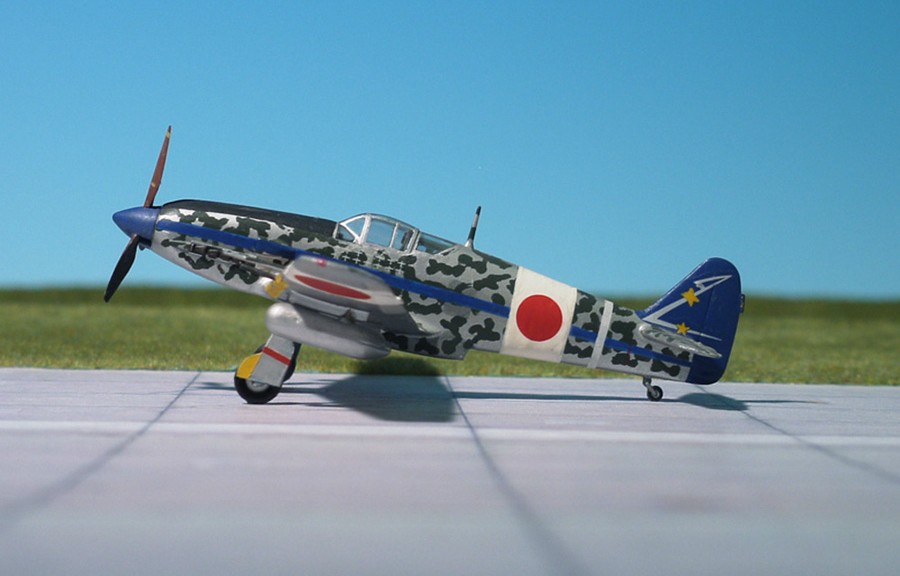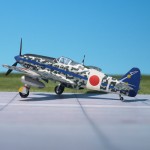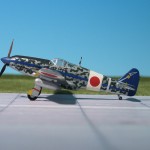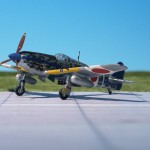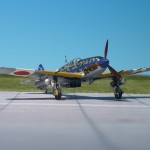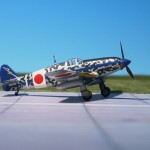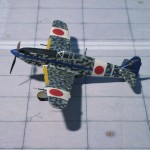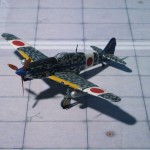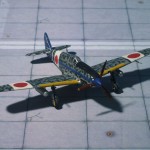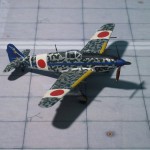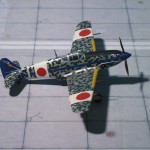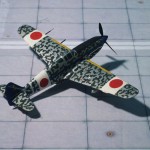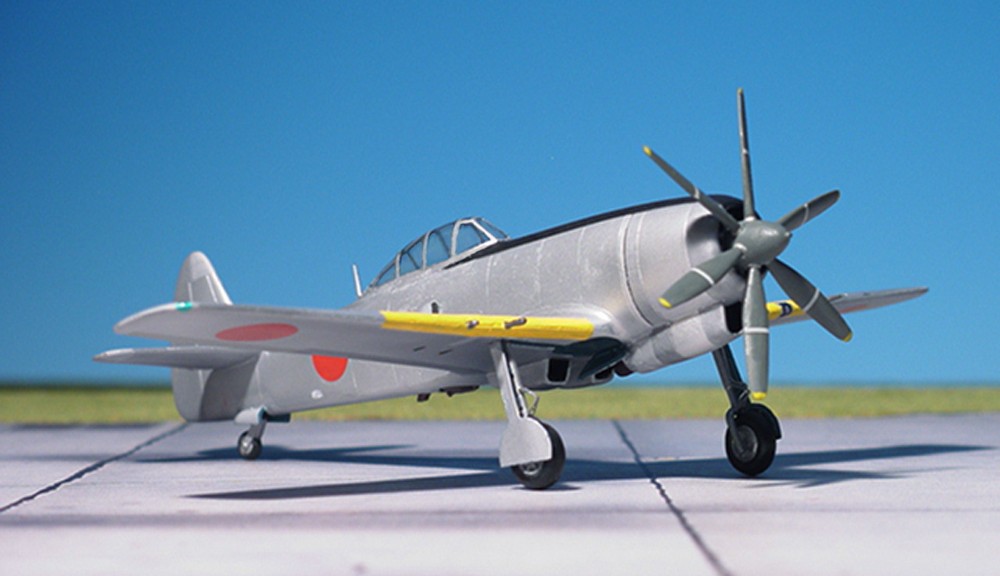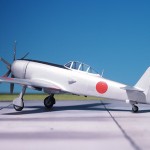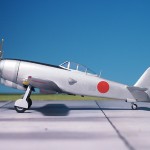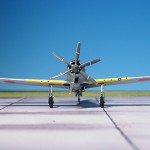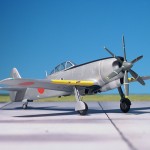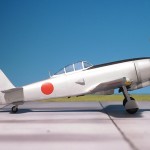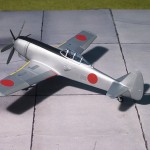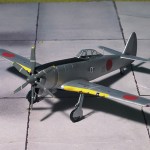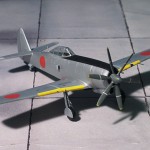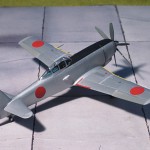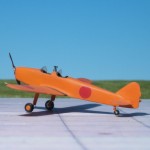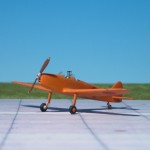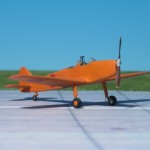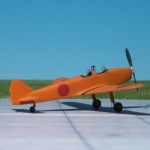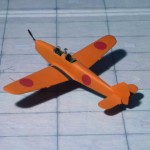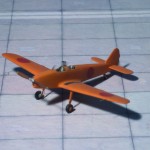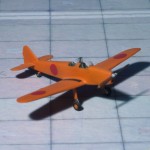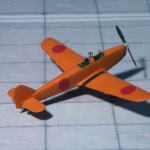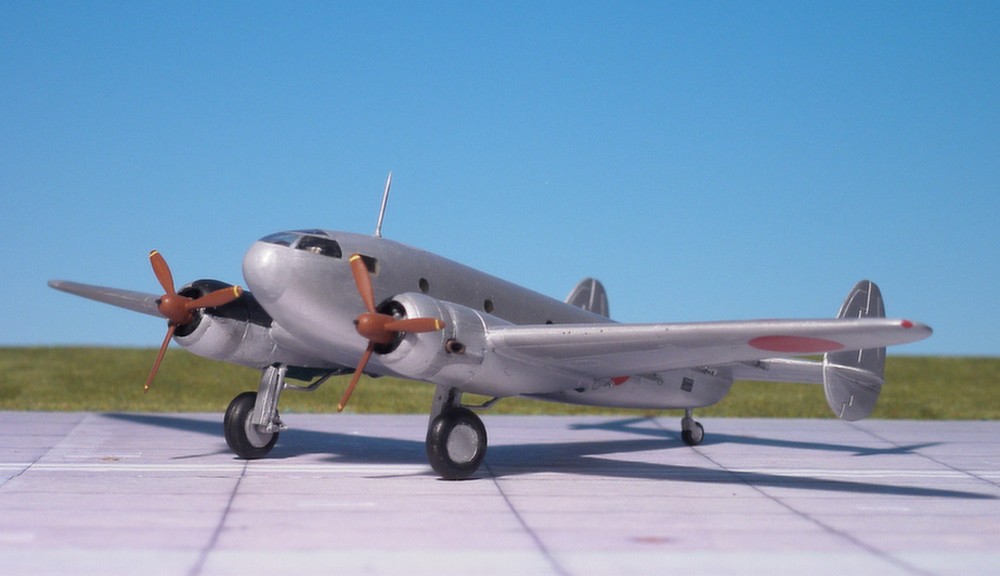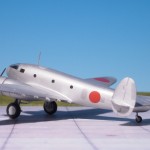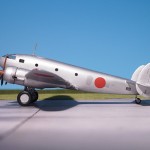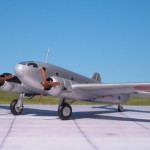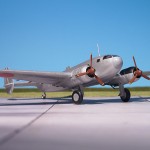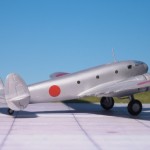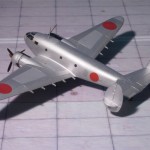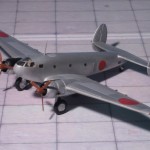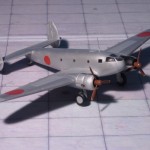Category Archives: Imperial Army Air Force
Japan
Tachikawa Ki-94-II (A + V Model, Resin)
TYPE: High-altitude fighter
ACCOMMODATION: Pilot in pressurized cockpit
POWER PLANT: One Nakajima Ha-44 radial engine, rated at 2,450 hp
PERFORMANCE: 442 mph at 39,370 ft (estimated)
COMMENT: In mid-1942, the Imperial Japanese Army Air Force wanted to obtain a high-altitude fighter fitted with a pressure cabin and capable of reaching a top speed of 497 mph and having a maximum range of 1,850 miles. As these performance requirements were rather stringent, the Koku Hombu decided to instruct Tachikawa to proceed with the design of the aircraft designated Ki- 94 while they placed a contract with Nakajima for another high-altitude fighter, the Ki- 87, with less stringent range requirements.
The initial aircraft was a large twin-boom monoplane with two engines mounted in tandem driving four-blade tractor and pusher propellers. But it was judged that the design was too complex and in 1943 Tachikawa submitted a new proposal to meet the same requirements as the competitive Nakajima Ki-87. The new aircraft was a single-engine high-altitude fighter of conventional design with laminar-flow wing and featuring a pressure cabin mounted in the fuselage behind the wing trailing edges. The aircraft was to be powered by a fan-cooled turbo-supercharged 2,400 hp Nakajima radial engine driving a six-blade propeller. This design was approved by the Koku Hombu, and the aircraft was designated Ki-94-II (the scrapped earlier Ki-94 design was named the Ki-94-I). An order was placed for one static test airframe, three prototypes, and eighteen pre-production aircraft. Only two prototypes were built in the event; the first was equipped with a single 2,541 hp Nakajima Ha-219 (Ha-44) engine, driving a four-blade propeller because the six-blade one was not ready. The second prototype was to be fitted with a six-blade propeller. The war’s end however stopped the construction of the second prototype and also found the first prototype still being readied for its intended maiden flight, the Ki-94-II never taking to the air (Ref.: 1, 24).
Tokyo Koku Ki-107 (A + V Model, Resin)
TYPE: Monoplane trainer
ACCOMMODATION: Teacher and student pilot
POWER PLANT: One Hitachi Hatsukaze Ha-47 inline piston engine, rated at 110 hp
PERFORMANCE: 122 mph
COMMENT: The Tokyo Koku Ki-107 was a Japanese military training aircraft for the Imperial Japanese Army Air Force. The Ki-107 was a wooden-built low-wing two-seat monoplane with an open cockpit. Powered by a Hitachi Hatsukaze Ha-47 (Ha-11) inline piston engine it first flew in October 1943.The Japanese Army had ordered 450 as primary trainers as replacement for the Kokusai Ki-86 (a license built German Bücker Bü 131 that used the same Ha-47 engine), but production was held up by air raids and only 29 had been delivered by the end of the war (Ref.: 24).
Tachikawa SS-1 (FEresin, Resin)
TYPE: Pressurized research transport aircraft
ACCOMMODATION: Crew of six
POWER PLANT: Two Mitsubishi Ha-102 radial engines, rated at 1,080 hp each
PERFORMANCE: 295 mph at 19,030 ft
COMMENT: In 1938 the Lockheed Aircraft Corporation exported to Japan a total of thirty of their Model 14-38 twin-engined passenger transport. Twenty aircraft were delivered between March and July 1938 to Tachikawa Hikoki K.K. for eventual re-sale to Nihon Koko K.K. (Japan Air Transport Co Ltd) while a further ten aircraft were delivered direct to Nihon Koku K.K. between June and September 1938. Operated by the airline and its successor, Dai Nippon Koku, on its routes linking Japan to China, the aircraft was powered by a pair of 900 hp Wright R-1820-G3B radials. Being used throughout the war, these civilian aircraft received the Allied code name of TOBY.
Tachikawa, also having successfully negotiated a manufacturing licence with Lockheed, decided to submit to the Army a proposal covering Japanese production of a modified version. As the Army urgently required air transport to support their operations in China, this proposal was favourably received, and in 1939 Tachikawa were instructed to undertake the manufacture of this aircraft to carry military personal. Powered by two 900 hp Mitsubishi Ha-26-I radials and designated Army Type LO Transport, these aircraft were also built by Kawasaki. As the aircraft’s handling characteristics were found somewhat unsatisfactory by Army pilots, Kawasaki were instructed to redesign the aircraft, and eventually this led to the production of the Kawasaki Ki-56. Despite its shortcomings, the Army Type LO Transport, known as THELMA to Allied forces, was operated until the Japanese surrender.
In late 1940, Tachikawa undertook to produce an experimental aircraft specifically for pressurization experiments. To speed up work, the wings, rear fuselage section and tail surfaces of the Army Type LO Transport were retained, and a shorter pressurized forward and centre fuselage section was designed. Of cylindrical cross section, the new forward fuselage had no windscreen step, and other modifications included the replacement of the Type LO power plants with two 1,080 hp Mitsubishi Ha-102 radials. Designated Tachikawa SS-1, the aircraft was completed in May 1943 and during its brief trials proved valuable data on cabin pressurization (Ref.: 1).
